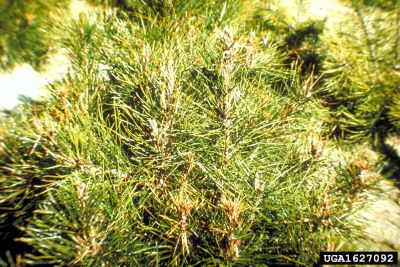What is a Cypress Tip Moth?
This moth is a small, gray bug that reproduces damaging larvae. These larvae mine the foliage and twigs of evergreen trees and others, sometimes causing visible damage. Cypress tip moths include several species in the genus Argyresthia. A. cupressella is also called cypress tip miner, while A. thuiella is called the arborvitae leaf miner. They lay eggs in the foliage and on the tips of twigs so their larvae can further mine (burrow into) the leaves and twigs and eat them. This causes drying out and death of the needle, twig, or leaf. The larvae are the juvenile insect stage that causes the damage. This leaves holes and serpentine tunnels that later become large blotches in the foliage, causing discoloration of the twigs and leaves, then yellowing, browning, and dieback. Some cypress tip moth larvae spend the entire larval stage within the same needle. Tunnels are formed by movement and become larger with insect growth. There are several types of blotch leaf miners, the most common type. A. cupressella burrows into young twigs of cypress trees while A. thuiella mines on leaves and twigs of cypress, juniper, arborvitae, and sometimes redwood. A full-stage attack by these moths may later cause areas of defoliation. While this damage makes the trees unsaleable and unsightly, it rarely causes damage to the health of the tree.
Cypress Tip Moth Control
Treatment is not always necessary. If you wish to improve the appearance of problem trees, try managing cypress tip moths with the following tips and tricks:
Prune off dead and infested branches. Bring in small wasps called Diglyphus isaea, the leaf miner parasite. Don’t spray insecticide if you use these beneficial wasps. They are particularly useful for greenhouse and field-grown specimens. Apply systemic insecticides to the soil in spring. Not for use with the wasps. Apply a general insecticide to the tree in spring. Spinosad has proven effective with one application.
Don’t confuse moth damage with the more serious leaf-spotting fungi, which cause similar symptoms. Insect-damaged needles or leaves will have a hollow place in the tunnels with signs of the insect or its frass. Leaf spot fungi damage won’t include tunnels.
